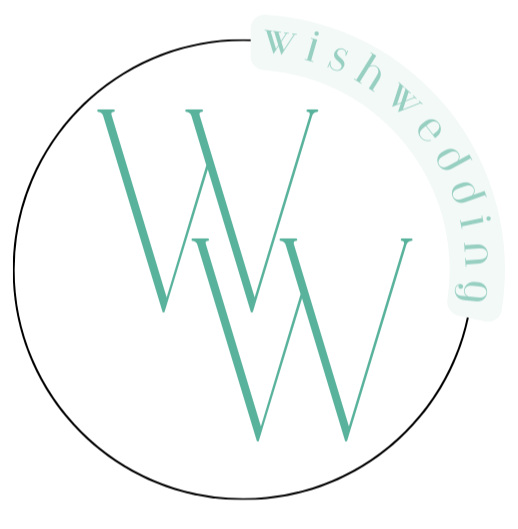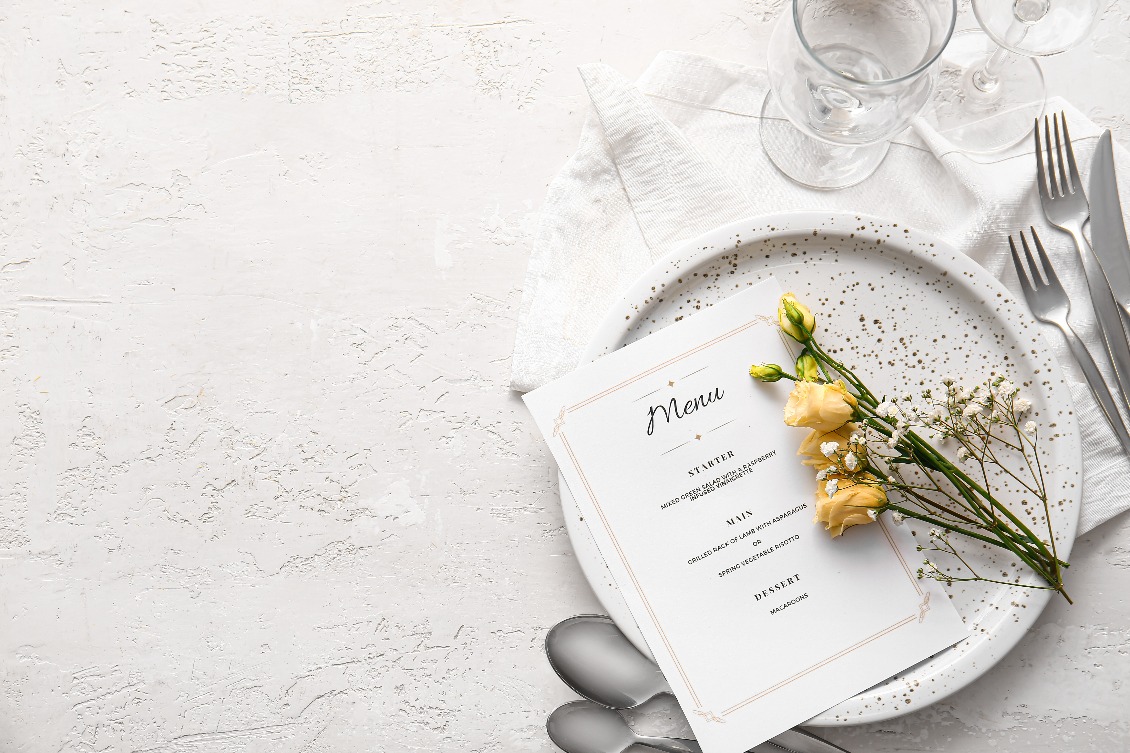- welcome sign
- seating chart
- table numbers
- place cards
- menus
- guest book
welcome sign
Your reception welcome sign is another piece of stationery that's self explanatory - it welcomes your guests to your reception. They're usually placed at the entrance to the reception room or space, in a spot that's likely to catch the eye of your guests as they approach.
paper printing
Most welcome signs are A1 and displayed on an easel. This makes them small enough to transport relatively easily, but large enough to be hard to miss.
If your wedding is happening outdoors, you might want to consider using paper with a water resistant coating, and how you can secure the sign to the easel so it doesn't get blown away.
what to include
The most simple reception welcome sign could be the exact same one used for the ceremony, just moved to a different location, that simply says, "Welcome to the wedding of (name) and (name)." Yours and your partner's names should be in the same design as they were on the invites.
extra info
Depending on the design, your guests' personalities and how busy your reception is going to be, you can include more detail in the form of a program / schedule of events on the welcome sign. This is really helpful for letting guests know when to expect the big moments of the reception, such as dinner service, speeches, first dance, cake cutting, etc.
seating chart
If you're having a sit down dinner service across multiple tables, the seating chart is such an important part of your reception - even more so if you're having a medium or large size wedding. It needs to be designed so that your guests can easily find which table they're sitting at, otherwise you can end up with a bottleneck of people blocking the entrance as they all try to figure out where they're meant to go.
paper printing
No matter the size of your guest list, having an A1 size seating chart is preferable, because it gives you room to use a reasonably sized font and adequately space out each table grouping.
what to include
A list of who's sitting at which table. The best layout for a seating chart is the most intuitive one, where each table number is a simple heading, with the guest names listed underneath.
extra info
- escort cards
If you're not assigning guests to specific seats, you might choose to use escort cards instead of a seating chart. These are individual cards with your guests' full names on them, arranged on a welcome table right by the entrance to the reception space. Your guests find their name, grab their card and then use that to mark their place once they've chosen a seat. This can help with ensuring that the right dishes are served to guests with dietary requirements, and that someone doesn't lose their seat the moment they stand up.
Escort cards aren't common at Australian weddings, and I wouldn't recommend them unless you're having a micro wedding. Even if you've only got 50 guests, that many people trying to coordinate themselves and get seats together with the rest of their family is going to cause massive delays in getting everyone seated and ready for dinner.
table numbers
Unless you're having banquet seating, where all of your guests sit together at one long table, table numbers are a very necessary part of your stationery suite.
paper printing
There's no set way for table numbers to be printed - the only thing you need to make sure of is that they're easy to read from a distance.
what to include
A simple, easy to read number or name.
extra info
You don't necessarily have to use numbers to mark your tables - depending on the aesthetic and theming of your wedding you might want to name them instead.
If you're both big readers you could use books as part of your centrepieces, and name your tables after your favourite ones. Or, if you've travelled a lot and are incorporating mementos into your decor, you could name each table after a different country or city.
As long as it's well signed on the tables themselves, your table numbers and names can be a really fun way to inject some extra personalisation into your wedding without going overboard with decor pieces.
place cards
If you've got assigned seating, once your guests have found which table they're sitting at they need to know which specific seat is theirs. Place cards avoid any potential awkwardness and delays that can come from people picking their own seats, and also help wait staff with making sure special dishes are served to the right guests.
paper printing
The design of a place cards is typically business card size. They can be folded so that they stand up on their own, or can be displayed in a holder that matches your wedding aesthetic and table centrepieces.
what to include
Your place cards should feature the guest's name and, if they have any, their dietary requirements.
menus
Even if you're not having a sit down dinner service, reception menus are still an important piece of stationery that you should include. If you're having table service, printed menus are not only practical, but also elevate your table settings. If you have wait staff walking around and serving the food to your guests, it saves them repeating what the food is over and over. If you're having the food on a table for guests to grab as they please, it means that they can feel confident about what they're getting - especially those with allergies or dietary requirements.
paper printing
There are two common paper sizes for menus - DL, which is long and skinny, or A5.
You can have separate menus for drinks and food, or you can print them double sided so there's drinks on one side and food on the other.
what to include
Exactly what it says - the menu. You want to tell your guests what's on offer in terms of food and drinks.
If you have guests with dietary requirements, make sure to include any dietary information on the food menu, noting if any dishes are vegetarian, vegan or gluten free, or contain any known allergies.
It's also helpful to separate your drinks menu into alcoholic and non-alcoholic options, just to make it easier to read at a glance.
guest book
Guest books are a lovely souvenir to keep from your special day, where your guests can write messages of love and support.
paper printing
Traditionally, a guest book was just that - a book. Now however, there aren't really any rules. You might have separate guest books spread out around the room, you might ask for guests to sign an object that's related to your hobbies, you might ask for polaroid photos to accompany their messages.
what to include
All you need is something for your guests to sign, and something to sign it with.
Depending on what exactly you're using for a guest book, you might provide different coloured sharpies, washi tapes, stickers, etc. to help your guests decorate. Or, if you're opting for something more low key, maybe you'll just provide them with black pens. It's really up to you what you include.
extra info
Some creative guest book options for guests to sign include: A photo album; Jenga pieces or puzzle pieces; A collaborative art piece, like a collage or painting; Your welcome sign; Playing cards; A calendar; Postcards; A vinyl of the first dance song; or Ornaments.
You don't even have to have your guests actually sign anything, though. Audio guest 'books' are becoming really popular, with vintage-style phones set up for your guests to record messages that you can listen to later.
And of course you could do a mix of any of these, if you'd like. It might be nice to give guests different options depending on what they're comfortable with, and to give you something that can be displayed alongside something that can be listened back to.
To return to the main article about stationery design, click here.
To read about what stationery you need post wedding, read the next article in this series.







